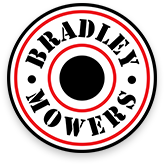It's that time of year again when homeowners across the country are taking out their lawn mowers and other lawn equipment to tidy up their yards for the summer. However, before you can start cutting those grasses, there are some essential steps you need to take to maintain your equipment properly. We will discuss how to properly care for your lawnmower, edger, and other tools so that they last longer and function better.
1. Clean Your Mower's Deck and Undercarriage
Before you start using your lawn equipment, the first thing you should do is clean off any large debris that might still be stuck to the deck or undercarriage. If you plan on sending your mower through a car wash, this would be a good time to do it. Removing dirt and grime from underneath your deck will help prevent grass clippings from building up and reducing airflow. It also helps keep everything running smoothly by removing any objects that could potentially damage the internal components of your mower.
2. Change the Oil in Your Lawn Mower
Many gasoline-powered lawn mowers come with an oil drain plug located underneath them where used motor oil can be drained out after it has been used. Drain oil into a container before adding new, clean motor oil.
3. Clean Engine Components With Compressed Air
Once you're done changing the oil in your mower, it's time to clean off all of the dirt and grime that was left on various parts of your equipment after draining out the old oil. Use compressed air or an old paintbrush to get rid of debris from small crevices.
4. Sharpen Blades on the Lawn Mower or Edger
While not precisely required every time you sharpen your blades, this step is recommended. You should also make sure to check your blade's balance before sharpening them and replacing them if necessary.
5. Check Belt Tension and Condition
Before starting your mower, make sure the belts aren't too loose or tight. If they are either of these conditions, you will need to adjust them accordingly. You can do this by using a wrench to loosen the bolts that hold the pulleys in place and then turning each one until it is at a suitable tension.
6. Check the Oil on the Chainsaw
If you own a chainsaw, be sure to check its oil levels before usage. Most saws come with an oil cap near their bar and chain components where you can add oil. Make sure to fill the bar and chain with your newly added oil before cutting anything.
7. Inspect Hoses and Nozzles for Leaks
Before turning on your hose, inspect it and the nozzle for any signs of rust or cracks. If you spot any, it's probably best to replace them instead of taking the risk that they might damage other components in the future.
These are a few simple steps you can take to keep your lawn equipment in working condition throughout the spring and summer months. Follow this advice, and they'll work better for you when you use them next time.
